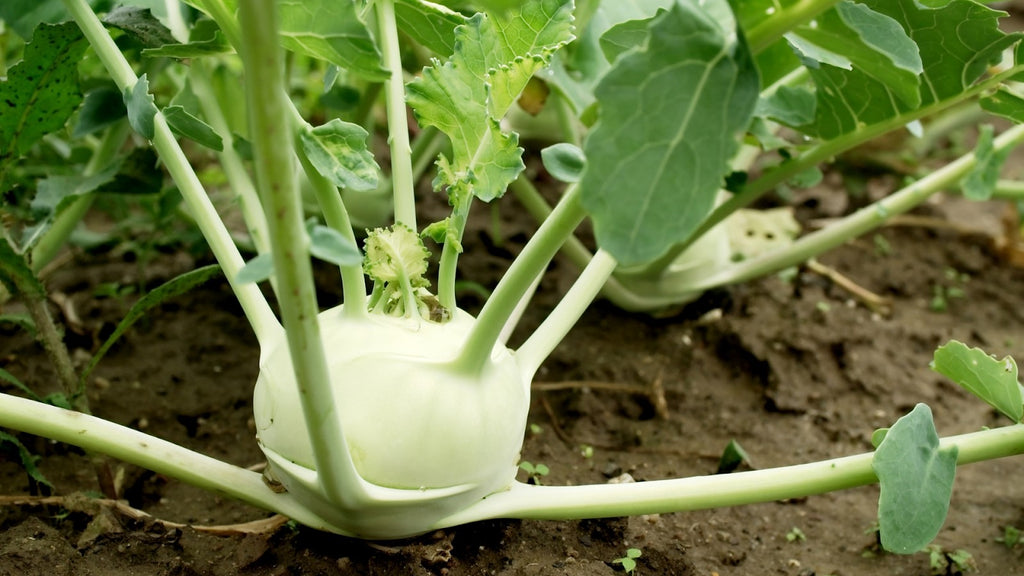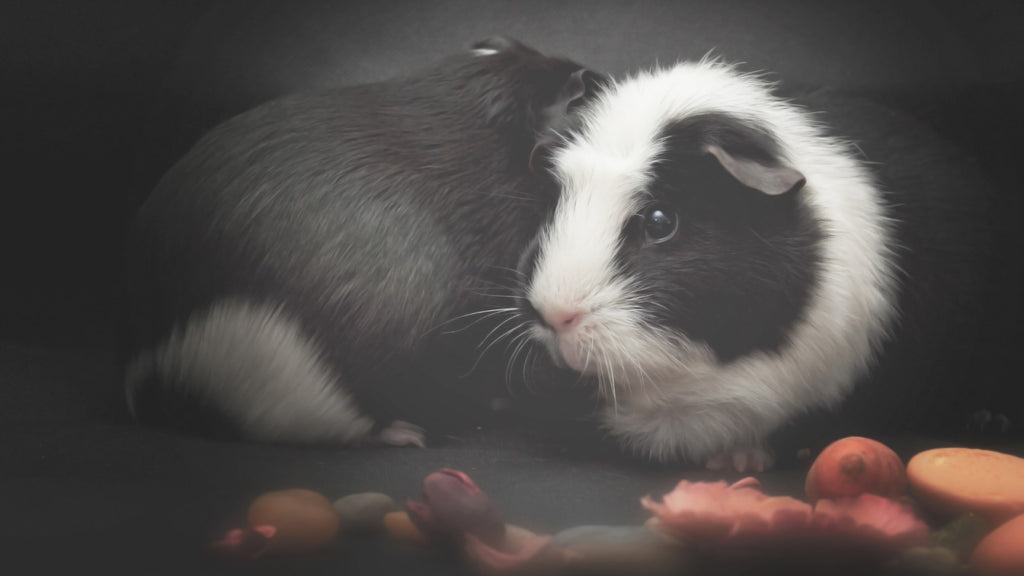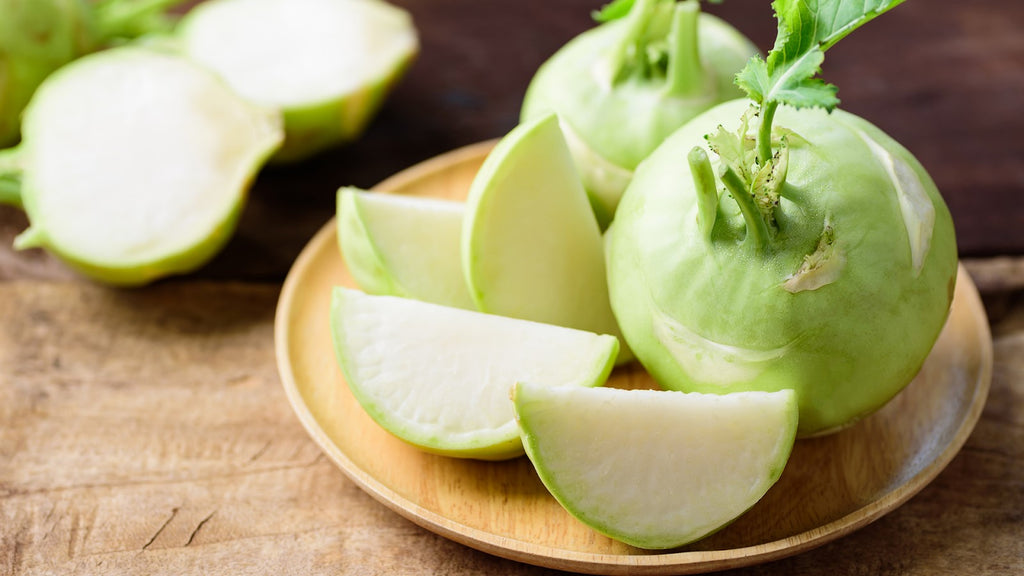
Kohlrabi, also called German turnip, is a biennial vegetable, a low, stout cultivar of wild cabbage. It is the same species as cabbage, broccoli, cauliflower, kale, Brussels sprouts, collard greens, and Savoy cabbage. Kohlrabi consists of a bulbous stem with leaves coming off it in random places which can either be purple or green. The bulb part of this fruit is like a turnip, crisp and juicy which can be eaten raw or cooked by humans.
It is so highly valued in countries and cuisines around the world not only for its diversity in cooking applications, but also because it is full of nutrients and minerals like copper, potassium, manganese, iron, and calcium, as well as vitamins, such as vitamin C, B-complex vitamins, vitamin A, and vitamin K. Have you ever wondered whether guinea pigs can benefit from this nutrients? Can guinea pigs eat kohlrabi? Answers to these questions and all other questions will be answered in this article.
Can guinea pigs eat Kohlrabi?
Yes, guinea pigs can eat kohlrabi but only in moderation. Kohlrabi is often termed a superfood not only because it can be used to make different dishes, but also because a lot of essential nutrients are present in them. Guinea pigs generally are herbivorous animals, and anything related to vegetables and fruits is what they mostly find delight in. Fortunately, kohlrabi is a vegetable that is enriched with vitamins (one of the essential nutrients needed by the body system of your little cavies), minerals, fiber, and some other macronutrients like calcium, iron, etc. However, this vegetable also has its side effects if eaten if it is not moderately fed. This lead to the proper way of serving Kohlrabi to your guinea pigs.

What is the proper way of serving Kohlrabi to guinea pigs?
Kohlrabi is good for guinea pigs, but it needs to be fed in moderation, to be called a part of a balanced diet. The food is high in calcium, as well as high in both vitamin C and a decent amount of sugar content. However, the standard proportion that should be given to your little cavies is one to two small leaves per pet better still, feed a medium leaf per two guinea pigs once or twice a week. You cannot feed your pig kohlrabi every day because it possibly can lead to nutrient imbalances and other health problems. For example, because kohlrabi is high in calcium, it is regarded to be a high-risk vegetable causing gas and bloat
However, if you are just feeding it to them for the first time, it is best to feed a small leaf of kohlrabi and also place them under 24-hour observation in other to watch out for any bad signs or allergy reactions. If you notice any changes, the best thing to do is cut back or not feed it to them again.
What are the benefits of feeding kohlrabi to guinea pigs
Kohlrabi is a vegetable known for offering a lot of benefits to little cavies because of the number of essential nutrients present in them. Some of the benefits they offer will further be discussed in today's article
Contains low calories
Studies have shown that only a small amount of calories is present in this vegetable. It also contains low amounts of carbs and proteins which are part of those essential nutrients that contribute to rapid growth in pets especially when consumes in high proportion.
Rich in antioxidants
Antioxidants are another vital nutrient that can help your pet improve its health. Antioxidants in the body system are responsible for giving protection against free radicals which are responsible for causing various serious health risks like cancer, as well as heart diseases. They also prevent your little cavies from early aging and also reduce the risk of all these serious health risks
Contain Vitamins
There are various types of vitamins present in kohlrabi and all these vitamins are responsible for various important factors in their body system. Vitamin C is responsible for preventing a common disease in guinea pigs called scurvy, and it can also help boost their immune system against all other diseases. They also contain vitamin A which helps to promote healthy strong teeth and bone, they are also responsible for promoting healthy white blood cells and soft tissues
Contain several macronutrients
Kohlrabi is enriched with macronutrients like manganese which help to provide excellent blood level sugar and reduce the risk of inflammatory diseases for your pets. Iron and copper in the vegetable are responsible for creating new red blood cells and also help their body system fight against anemia. While selenium helps to prevent their heart from any type of heart disease and also protects them against all forms of serious diseases like cancer.

Possible health risks of feeding kohlrabi to guinea pigs
There is a lot of health benefit attached to this vegetable, however, a lot of health risks can also arise from them if pet owners did not follow the correct standard of feeding this vegetable to guinea pigs. Some of the health risks are listed below.
Urinary blockage
Kohlrabi is enriched with a high proportion of calcium and phosphorus content. High consumption of these nutrients can develop into the accumulation of stones in the urinary tract which eventually leads to painful urination for your pets and the presence of blood during the urine. This complication is often termed kidney or bladder stones.
Digestion problem
Kohlrabi contains a decent amount of sugar, and this is not a problem when it is correctly served. However, if it is being overfed to your little cavies, it may result in stomach or abdominal ache, bloatedness, cramps, and other related digestive problems.
Conclusion
Guinea pigs can eat kohlrabi, but it should only be in moderation. This may be a result of the high proportion of calcium and phosphorus present in this vegetable. Apart from that, this vegetable is enriched with a lot of beneficial nutrients that can improve the body system of your guinea pigs, and some of the benefits have been listed above. Pet owners should endeavor to check out the standard proportion this vegetable should be served before they feed it to their pets. For more information, you can scroll up this article to read through
